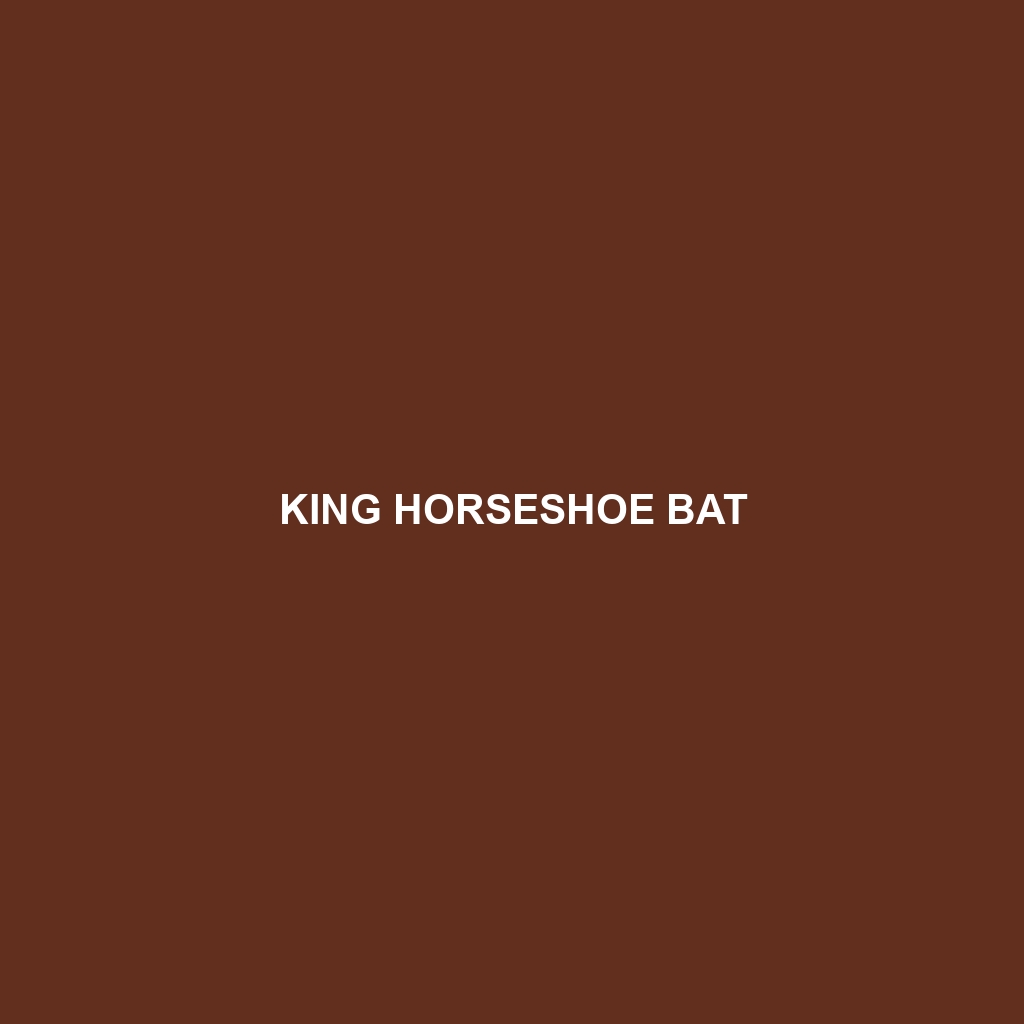Glossy Horseshoe Bat: An Overview
Common Name: Glossy Horseshoe Bat
Scientific Name: Rhinolophus rouxi
Habitat
The Glossy Horseshoe Bat primarily inhabits forested areas and caves across parts of Africa and Southeast Asia. This species is often found in tropical and subtropical regions, utilizing dense foliage and humid environments as roosting sites. Found in countries such as Indonesia, Malaysia, and Vietnam, they thrive in ecosystems rich in insect populations necessary for their survival.
Physical Characteristics
Glossy Horseshoe Bats are medium-sized bats, typically measuring around 4-5 inches in body length with a wingspan of approximately 12-14 inches. Their fur is glossy and varies from brown to dark reddish-brown, which aids in camouflage within their natural habitats. A distinct horseshoe-shaped structure on their noses helps differentiate them from other bat species, making them easily recognizable.
Behavior
These bats are primarily nocturnal, engaging in foraging activities at dusk. They exhibit social behavior, often roosting in groups within caves or tree hollows. Their echolocation abilities are advanced, allowing them to navigate and hunt efficiently in low-light conditions. Glossy Horseshoe Bats are known to engage in complex flight patterns when foraging, which may attract interest from researchers studying bat behavior.
Diet
The diet of the Glossy Horseshoe Bat predominantly consists of insects, particularly moths and beetles. These bats are adept at catching prey mid-flight, showcasing their agility and precision. Their feeding habits play a critical role in controlling insect populations, making them valuable to agriculture and natural ecosystems.
Reproduction
The reproductive habits of the Glossy Horseshoe Bat involve a breeding season typically occurring in late spring. Females give birth to one or two pups after a gestation period of approximately 45 days. Maternal care is prominent, with mothers forming nurseries to ensure the safety and development of their young, making studies of their reproductive behavior significant for wildlife biologists.
Conservation Status
Currently, the Glossy Horseshoe Bat is listed as “Vulnerable” on the IUCN Red List. Major threats to their population include habitat destruction due to deforestation and agricultural expansion, making conservation efforts imperative to protect this unique species.
Interesting Facts
One fascinating aspect of the Glossy Horseshoe Bat is its remarkable capacity for echolocation, which allows it to locate food in complete darkness. Additionally, this species exhibits a unique adaptation that enables it to fly at high altitudes, a behavior not commonly observed in other bat species.
Role in Ecosystem
Glossy Horseshoe Bats play a critical role in their ecosystems as pollinators and natural pest controllers. By feeding on various insects, they help maintain a balanced environment, supporting agricultural health and biodiversity. Their presence is indicative of a healthy ecosystem, highlighting their importance within the food web and overall ecological stability.
